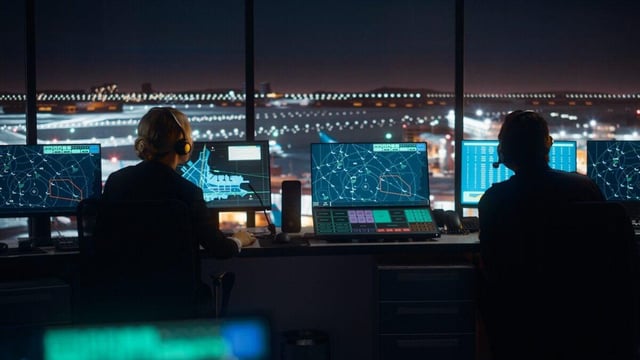Imagine this: you’re finally heading out on that dream vacation. You’ve packed your bags, navigated airport security, and settled into your seat. But then, the announcement crackles over the intercom: “We regret to inform you that your flight has been cancelled.” This scenario, already frustratingly common, could be about to get a whole lot worse. The potential culprit? A perfect storm brewing within the air traffic control system.
The Looming Threat: Air Traffic Controller Shortage
Air travel relies on a complex and often invisible network of dedicated professionals. At the heart of this system are air traffic controllers, the individuals responsible for safely guiding aircraft through our skies. However, this crucial workforce is facing a significant challenge: a growing shortage. This isn’t just a minor inconvenience; it’s a critical issue that threatens the stability of the entire air travel system.
Reports indicate that many air traffic control facilities are operating with significantly reduced staff. Controllers are often working mandatory overtime, leading to fatigue and increased stress. This exhaustion can lead to mistakes, delays, and, ultimately, flight cancellations. The situation is further exacerbated by the demanding nature of the job, which requires intense concentration and quick decision-making under pressure. It’s a recipe for burnout, and it’s pushing the system to its breaking point.
The problem isn’t just about the existing workforce being stretched thin. There’s also a significant backlog in training new controllers. The training process is lengthy and rigorous, requiring years of specialized instruction and on-the-job experience. This means that even with increased efforts to recruit and train new controllers, it will take time to alleviate the current shortage.
The Impact: A Cascade of Cancellations and Delays
What does this shortage mean for the average traveler? Unfortunately, it translates into more frequent flight cancellations and delays. When air traffic control facilities are understaffed, they are forced to reduce the number of flights they can handle. This can create a ripple effect throughout the entire air travel network, leading to delays at airports across the country.
Consider the scenario of a major airport experiencing staffing shortages. This could lead to ground stops, where flights are held at their origin airports to prevent overcrowding in the affected area. This, in turn, creates a domino effect, delaying subsequent flights and potentially stranding passengers. The consequences can be especially severe during peak travel seasons, such as holidays and summer vacations.
Beyond the immediate inconvenience of cancellations and delays, there are also significant economic impacts. Airlines face increased costs due to rerouting flights, compensating passengers, and dealing with logistical disruptions. These costs can ultimately be passed on to consumers in the form of higher ticket prices. The ripple effect can also impact businesses that rely on timely air travel for cargo shipments and employee travel.
Potential Solutions: Addressing the Root Causes
Addressing the air traffic controller shortage requires a multi-faceted approach. One critical step is to increase funding for air traffic control training programs. This will help to expedite the process of training new controllers and alleviate the backlog that is currently contributing to the problem. Investing in state-of-the-art training facilities and technologies can also improve the efficiency and effectiveness of the training process.
Another important aspect is to improve the working conditions for existing air traffic controllers. This includes addressing issues such as mandatory overtime, inadequate staffing levels, and high-stress environments. Providing controllers with adequate rest and support can help to prevent burnout and improve job satisfaction. This, in turn, can help to retain experienced controllers and reduce turnover.
Furthermore, exploring technological solutions can help to optimize air traffic management and reduce the workload on controllers. This includes implementing advanced automation systems that can assist with tasks such as flight planning and conflict resolution. Investing in these technologies can improve the efficiency and safety of the air travel system while also reducing the strain on the existing workforce.
The Future of Flight: Navigating the Turbulence
The air traffic controller shortage presents a serious challenge to the stability of the air travel system. While the situation may seem dire, there are steps that can be taken to mitigate the risks and ensure a smoother travel experience for passengers. By investing in training, improving working conditions, and embracing technological advancements, we can work towards a more resilient and efficient air traffic control system.
As travelers, it’s also important to be aware of the potential for disruptions and to plan accordingly. This may involve allowing for extra time when booking flights, purchasing travel insurance, and staying informed about potential delays or cancellations. By being proactive and prepared, we can minimize the impact of potential disruptions on our travel plans.
The future of flight depends on our ability to address the challenges facing the air traffic control system. By working together, government agencies, airlines, and travelers can ensure a safe and efficient air travel experience for all. Ignoring this critical issue is not an option; the potential consequences are simply too great. Let’s ensure our skies remain safe and our travel plans remain on track.
